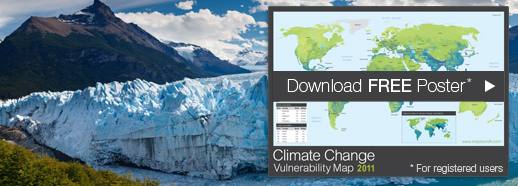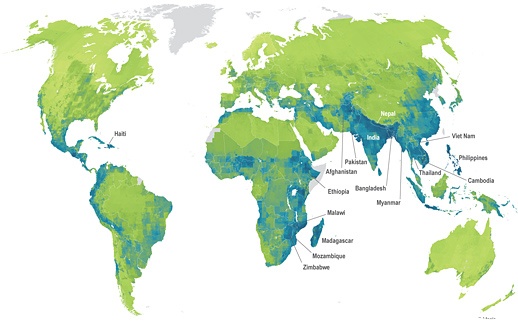Sustentabilidade


- Respostas Novas Para Uma Democracia Profunda
Mais do que meras ligações às autarquias e a núcleos universitários, as Organizações Não-Governamentais do Ambiente (ONGA) podem caminhar para soluções mais práticas do que apenas recolha de donativos e voluntariado. O novo paradigma das ONGA...
- Dia Internacional Da Família: Population Dynamics, Reproductive Health And Climate Change
Karen Hardee, PAI’s Vice President of Research, presented PAI’s recent research on population and climate change at the International Policy Symposium on the Connection between Population Dynamics, Reproductive Health and Rights and Climate Change...
- Condoms For Climate Change?
posted by: Beth B. 22 November 2009 71 comments If left unchecked, global climate change has the potential to drastically affect our access to fresh water, adequate food, and ample landspace for housing and...
- As Alterações Climáticas, Segurança E Política
As alterações climáticas começam a preocupar o Departamento de Defesa dos EUA e o Pentágono. No ensaio de John Broder, os militares incitam os governos a uma resolução económica eficaz para mitigar os efeitos do aquecimento global, caso contrário...
- Relatório Stern- Artigos Posteriores
Fonte:HM Treasury April 2007: The following papers were published in World Economics (Volume 8[1]), and these build upon papers A-C (please see further down). PDF file of Reflections on the Stern Review (1): A robust case for strong action to reduce...
Sustentabilidade
Ranking of the Climate Change Vulnerability Index - Maplecroft
Big economies of the future - Bangladesh, India, Philippines, Vietnam and Pakistan - most at risk from climate change
21/10/2010

A new global ranking, calculating the vulnerability of 170 countries to the impacts of climate change over the next 30 years, identifies some of the world’s largest and fastest-growing economies, including India, as facing the greatest risks to their populations, ecosystems and business environments.
The new Climate Change Vulnerability Index (CCVI), released by global risks advisory firm Maplecroft, enables organisations to identify areas of risk within their operations, supply chains and investments. It evaluates 42 social, economic and environmental factors to assess national vulnerabilities across three core areas. These include: exposure to climate-related natural disasters and sea-level rise; human sensitivity, in terms of population patterns, development, natural resources, agricultural dependency and conflicts; thirdly, the index assesses future vulnerability by considering the adaptive capacity of a country’s government and infrastructure to combat climate change.
The index rates 16 countries as ‘extreme risk,’ including nations that represent new Asian economic power and possess significant forecasted growth. Bangladesh (1), India (2), Philippines (6), Vietnam (13) and Pakistan (16) all feature in the highest risk category and are of particular importance as they are major contributors to the ongoing global economic recovery and are vital to the future expansion of Western businesses in particular.
“These countries are attracting high levels of foreign investment from many multinational organisations,” said Principal Environmental Analyst at Maplecroft, Dr Matthew Bunce. “However, over the next 30 years their vulnerability to climate change will rise due to increases in air temperature, precipitation and humidity. This means organisations with operations or assets in these countries will become more exposed to associated risks, such as climate-related natural disasters, resource security and conflict. Understanding climate vulnerability will help companies make their investments more resilient to unexpected change.”
Other countries featuring in the ‘extreme risk’ category include: Madagascar (3), Nepal (4), Mozambique (5), Haiti (7), Afghanistan (8), Zimbabwe (9), Myanmar (10), Ethiopia (11), Cambodia (12), Thailand (14) and Malawi (15). According to Maplecroft, the countries with the most risk are characterised by high levels of poverty, dense populations, exposure to climate-related events; and their reliance on flood and drought prone agricultural land. Africa features strongly in this group, with the continent home to 12 out of the 25 countries most at risk.
Climate Change Vulnerability Index 2011

| Legenda e fonte da notícia aqui | |
Throughout 2010, changes in weather patterns have resulted in a series of devastating natural disasters, especially in South Asia, where heavy floods in Pakistan affected more than 20 million people (over 10% of the total population) and killed more than 1,700 people. “There is growing evidence climate change is increasing the intensity and frequency of climatic events,” said Environmental Analyst at Maplecroft, Dr Anna Moss. “Very minor changes to temperature can have major impacts on the human environment, including changes to water availability and crop productivity, the loss of land due to sea level rise and the spread of disease.”
Maplecroft rates Bangladesh as the country most at risk due to extreme levels of poverty and a high dependency on agriculture, whilst its government has the lowest capacity of all countries to adapt to predicted changes in the climate. In addition, Bangladesh has a high risk of drought and the highest risk of flooding. This is illustrated during October 2010, when 500,000 people were driven from their homes by flood waters created by storms. However, despite the country’s plethora of problems, the Bangladesh economy grew 88% between 2000 and 2008 and is forecast to by the IMF to grow 5.4% over 2010 and up to 6.2% over the next five years.
India, ranked 2nd, is already one of the world’s power brokers, but climate vulnerability could still adversely affect the country’s appeal as a destination for foreign investment in coming decades. Vulnerability to climate-related events was seen in the build up to the Commonwealth Games, where heavy rains affected the progress of construction of the stadium and athletes’ village. Almost the whole of India has a high or extreme degree of sensitivity to climate change, due to acute population pressure and a consequential strain on natural resources. This is compounded by a high degree of poverty, poor general health and the agricultural dependency of much of the populace.
There are 11 countries considered ‘low risk’ in the index, with Norway (170), Finland (169), Iceland (168), Ireland (167), Sweden (166) and Denmark (165) performing the best. However, Russia (117), USA (129), Germany (131), France (133) and the UK (138) are all rated as ‘medium risk’ countries, whilst China (49), Brazil (81) and Japan (86) feature in the ‘high risk’ category.
The Climate Change Vulnerability Index is the central component of Maplecroft’s Climate Change Risk Atlas 2011, which also evaluates the risks to business relating to emissions, unsustainable energy use, regulation and climate change vulnerability. The index is also visually represented in an interactive, GIS derived “hotspots” sub-national map, which analyses climate change vulnerability risks down to a 25km² scale worldwide.
loading...
- Respostas Novas Para Uma Democracia Profunda
Mais do que meras ligações às autarquias e a núcleos universitários, as Organizações Não-Governamentais do Ambiente (ONGA) podem caminhar para soluções mais práticas do que apenas recolha de donativos e voluntariado. O novo paradigma das ONGA...
- Dia Internacional Da Família: Population Dynamics, Reproductive Health And Climate Change
Karen Hardee, PAI’s Vice President of Research, presented PAI’s recent research on population and climate change at the International Policy Symposium on the Connection between Population Dynamics, Reproductive Health and Rights and Climate Change...
- Condoms For Climate Change?
posted by: Beth B. 22 November 2009 71 comments If left unchecked, global climate change has the potential to drastically affect our access to fresh water, adequate food, and ample landspace for housing and...
- As Alterações Climáticas, Segurança E Política
As alterações climáticas começam a preocupar o Departamento de Defesa dos EUA e o Pentágono. No ensaio de John Broder, os militares incitam os governos a uma resolução económica eficaz para mitigar os efeitos do aquecimento global, caso contrário...
- Relatório Stern- Artigos Posteriores
Fonte:HM Treasury April 2007: The following papers were published in World Economics (Volume 8[1]), and these build upon papers A-C (please see further down). PDF file of Reflections on the Stern Review (1): A robust case for strong action to reduce...
